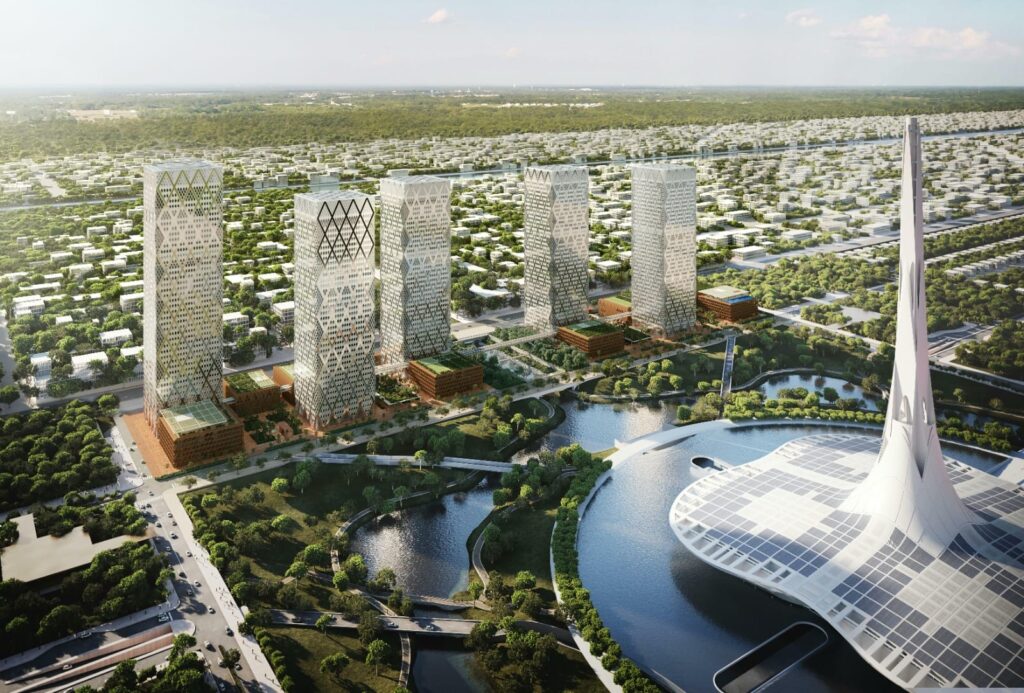
A capital city in any state is not just a geographical location; it is the heart of administration, politics, and economic development. For India, with its vast and diverse landscape, the choice and development of a capital city have profound implications. The capital symbolizes governance, facilitates economic activity, and reflects the state’s identity. However, in the case of Andhra Pradesh, the capital city debate has turned into a political tug of war, raising questions about its significance and future.
A capital city is not only the administrative headquarters but also plays a critical role in the state’s economic growth. It is the central hub for political decisions, legal matters, and bureaucratic functions. In India, where states have their unique challenges and developmental needs, having a well-planned capital can serve as the catalyst for balanced growth and regional development.
For Andhra Pradesh, after its bifurcation in 2014, the creation of a new capital city became more than just a logistical necessity. It was about building an identity, attracting investment, and providing a symbol of hope for its people. The capital could foster regional development, bring in job opportunities, and position Andhra Pradesh as an economic powerhouse in southern India.
The Dream of Amaravati – Can it Become a Reality?
When the TDP government envisioned Amaravati as the new capital, it was aimed at creating a world class city, strategically positioned between Vijayawada and Guntur. The grandiose vision included international infrastructure, economic zones, and a smart city designed to boost the state’s economy. However, the reality of building a capital from scratch turned out to be more challenging than anticipated.
Between 2014 and 2019, under the leadership of N. Chandrababu Naidu (TDP), there were some significant efforts to kickstart the construction of Amaravati. Yet, most of the progress was temporary. A temporary Legislative Assembly, a temporary High Court, and a temporary Secretariat were built to ensure the state government could function while permanent structures were being planned. These were quick fixes, which never fully reflected the grand plans of a permanent capital. Financial constraints, land acquisition issues, and political resistance from farmers who were displaced due to the land pooling scheme made it hard for the TDP government to push the project forward.
Critics also argue that the TDP government focused more on promotional material and grand presentations including high end graphics and promotional videos rather than actually materializing the project on the ground. This lack of concrete progress and visible infrastructure became a key point of attack for the YCP government when they came to power in 2019. The failure to deliver tangible results on the Amaravati dream weakened public trust and gave political leverage to the opposition.
What Did the YCP Government Do Between 2019-24?
In 2019, YS Jagan Mohan Reddy and the YSR Congress Party (YCP) came into power, and the capital debate took a dramatic turn. Jagan’s government proposed the concept of three capitals Amaravati as the Legislative Capital, Visakhapatnam as the Executive Capital, and Kurnool as the Judicial Capital. This plan was touted as a means to decentralize power, promote regional development, and ease the financial burden of creating a single capital from scratch.
However, the decision sparked widespread protests, especially from farmers who had given up their land for Amaravati under the promise that it would be developed into a permanent capital. The YCP government also faced criticism for allegedly going back on its election promise to develop Amaravati as the sole capital. The shifting focus to three capitals led to political polarization, with the TDP accusing the YCP of betraying the state’s vision. This created an atmosphere of political instability and led to further delays in the capital project.
Despite repeated public statements by Jagan Mohan Reddy that he would shift his administration to Visakhapatnam, this never materialized. Over the years, he made announcements that he would start governance from Vizag “next Sankranti” or “next Dasara,” but each time it was postponed. These repeated delays fueled further criticism, with many claiming that the government wasted five crucial years without taking any concrete steps toward establishing a functioning capital.
The Ego War Between TDP and YCP – What Does It Cost Andhra Pradesh?
While both parties have had valid points, the ongoing ego war between the TDP and YCP has come at the cost of Andhra Pradesh’s growth. Rather than focusing on sustainable development, economic opportunities, and the welfare of the people, both parties have indulged in political one-upmanship, turning the capital issue into a battle of egos.
The TDP, under Naidu, initiated an ambitious project with grand plans, but failed to deliver on the promise due to issues with execution, resources, and public resistance. On the other hand, the YCP government has been quick to dismantle the TDP’s vision without presenting a clear and feasible plan for the future. The three capitals proposal lacks the consistency and vision needed for long-term growth, and it has raised questions about its implementation.
Both governments have treated the capital issue more like a political fight than a chance to develop the state. Because of their constant arguments and lack of agreement, Andhra Pradesh has faced political confusion and slow economic growth.
A Unified Vision is needed for Andhra Pradesh’s Future
The ongoing debate over the capital of Andhra Pradesh is an unfortunate example of how politics can overshadow progress. Both the TDP and the YCP have their share of mistakes and missed opportunities. While TDP’s Amaravati vision was grand, it lacked practical execution and sustainability. The YCP’s move towards three capitals may seem like a step towards decentralization, but it is not the comprehensive solution the state needs.
For Andhra Pradesh to truly move forward, both parties need to rise above their egos and work together on a cohesive plan that prioritizes the state’s development, economic growth, and the welfare of its people. Whether Amaravati remains the capital or the state moves towards a model of decentralization, what matters most is that the vision for Andhra Pradesh’s future is unified, realistic, and free from political squabbling. The state’s potential cannot be Held hostage to political battles it must be allowed to flourish on the strength of collaboration, vision, and progress.
Only when politics takes a backseat to genuine development will the dreams of Andhra Pradesh’s citizens, from all regions, truly be realized. Only when leaders prioritize the people’s needs and focus on development can Andhra Pradesh truly progress. The future of the state depends on unity, planning, and hard work, not on political drama.


